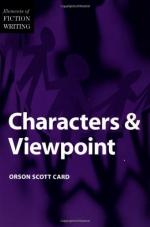|
This section contains 781 words (approx. 2 pages at 400 words per page) |

|
Chapters 10 and 11 Summary and Analysis
"The Comic Character: Controlled Disbelief" In this chapter, the author makes several important points about comedy—that it is almost always about pain and suffering, made acceptable to readers by incongruous interjections of humor and/or skewed perspective, and that ultimately those interjections are grounded in deeper truth (see "Quotes", p. 100). He then lists techniques for interjecting humor—a "take" (a moment in narrative in which a character points out to an audience and/or reader just how absurd something is), exaggeration (within certain boundaries), downplaying (making less of a setback rather than more), and eccentricity or oddness. All, the author writes, become even more effective when/if there is a clear emotional and/or historical grounding or reason for the reaction, particular when a major character is also comic. The "controlled disbelief" of the chapter's title...
(read more from the Chapters 10 and 11 Summary)
|
This section contains 781 words (approx. 2 pages at 400 words per page) |

|




